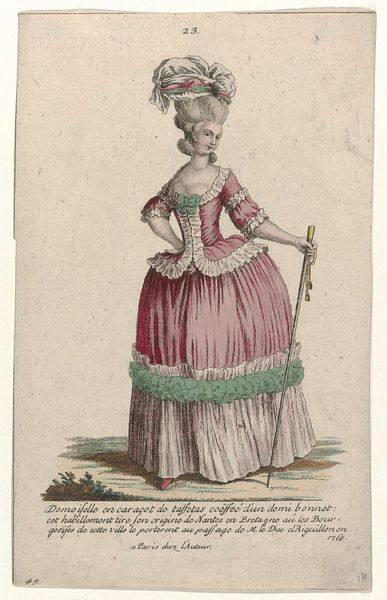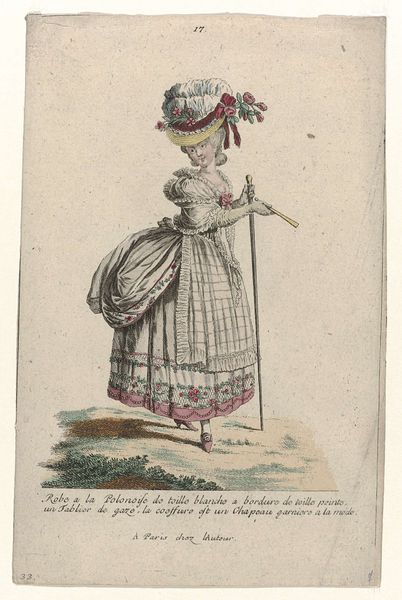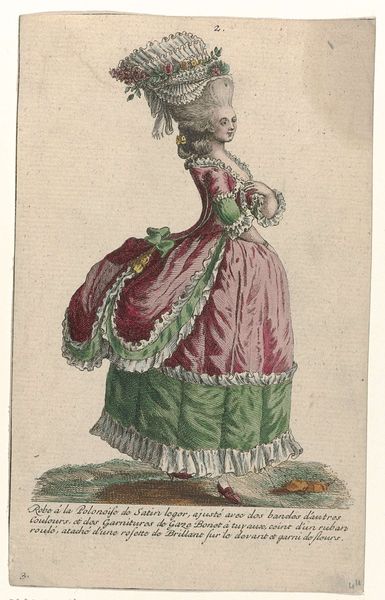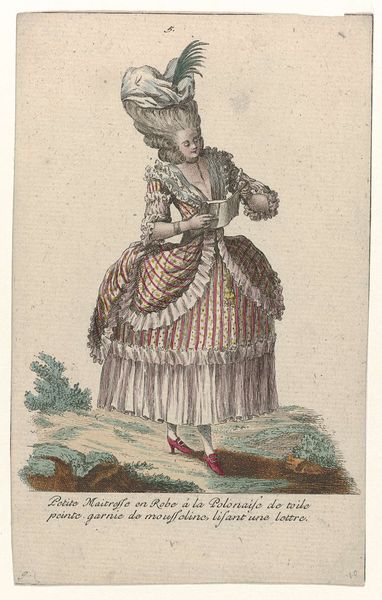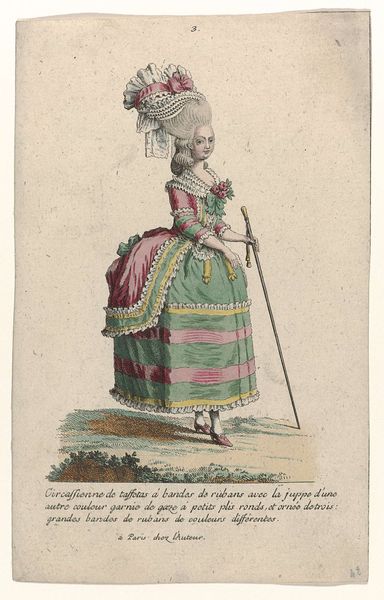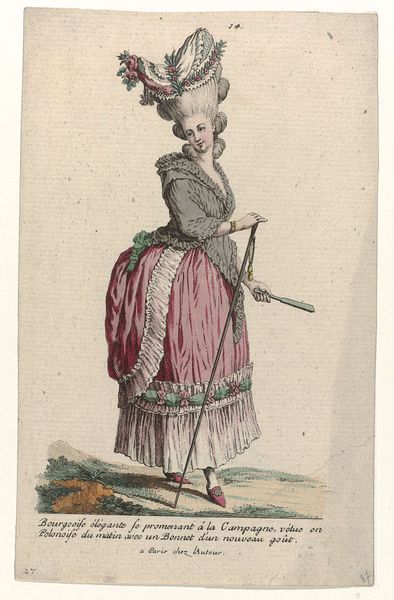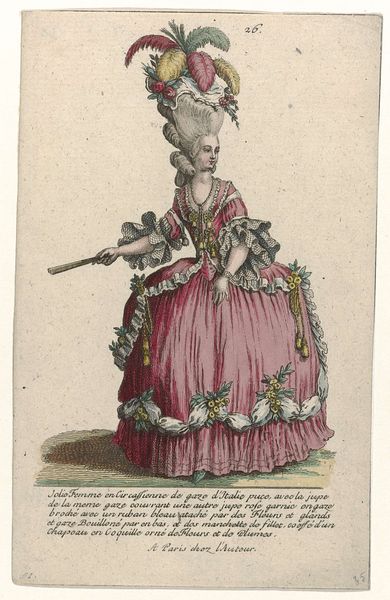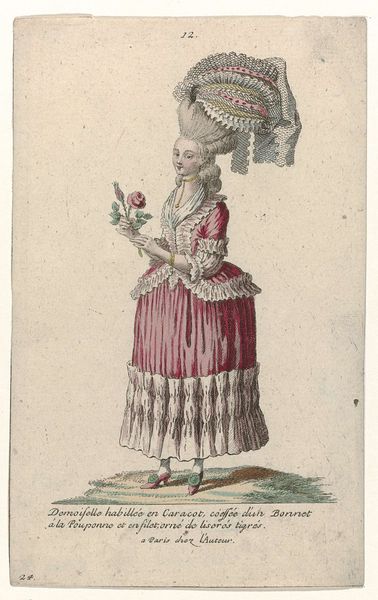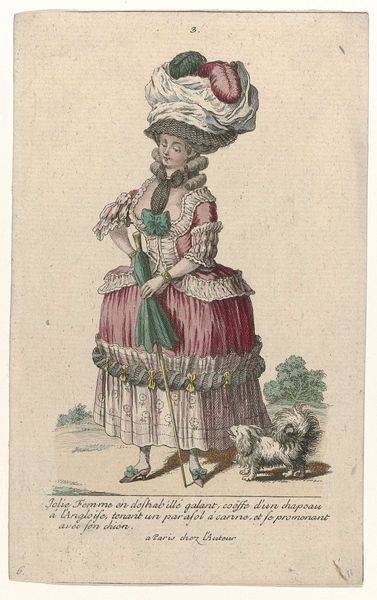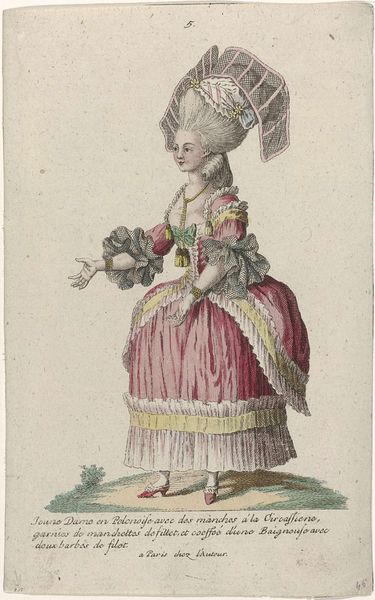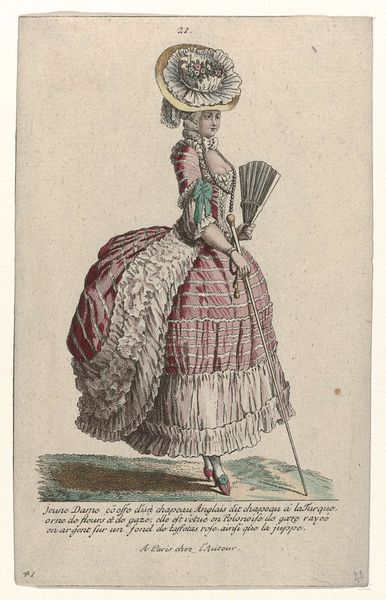
Gallerie des Modes et Costumes Français, 1785, nr. 6, nr. 11, Kopie naar N 78 : Jeune Dame en Circassienn (...) c. 1785
0:00
0:00
Dimensions: height 177 mm, width 111 mm
Copyright: Rijks Museum: Open Domain
Curator: This delicate etching, dating from approximately 1785, is titled "Gallerie des Modes et Costumes Français." It offers a glimpse into the height of French Rococo fashion. Editor: It’s like a fancy paper doll! All sugar-plum colors and frills... honestly, she looks terribly uncomfortable. All that weight on her head, too, poor dear! Curator: Observe the deliberate lines of the etching. Notice the clear compositional focus on the figure itself. The artist uses line and colour strategically to denote form and texture, placing emphasis on the garment’s intricate details. Editor: Details galore! So much going on—the layers of ruffles, the impossibly high powdered wig…it's all screaming for attention. To me, this feels like the visual equivalent of a very loud opera. Curator: The print presents an ideal of feminine beauty, one rooted deeply in aristocratic values and emphasizing artificiality. Even the pose is controlled, reflecting rigid social codes and gendered power structures. Editor: I suppose it does communicate the almost absurd lengths people went to showcase their status back then. I imagine maintaining that look was a full-time job—a beautiful gilded cage, maybe. Curator: Precisely. The “Circassienne” refers to a style influenced by perceptions of exoticism, reflecting a broader cultural fascination with the “Orient” prevalent during the late 18th century, whilst at the same time, showcasing local fabrics and accessories. It is the visual culture that is presented as truth. Editor: Fascinating. So, a whirlwind of borrowed ideas, piled high on a fancy dress. A sort of aesthetic colonialism, maybe? All quite literally ‘over the top’ then! Curator: In viewing "Gallerie des Modes," we decipher more than just a portrait; we examine the visual language of power, beauty, and the cultural exchanges that shaped the epoch. Editor: Indeed, and for me, it really drives home how our perception of beauty changes across history—and how even seemingly frivolous images like these carry echoes of something much deeper.
Comments
No comments
Be the first to comment and join the conversation on the ultimate creative platform.
